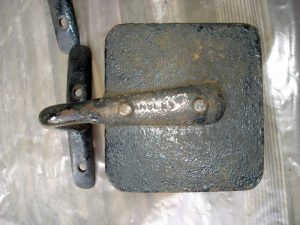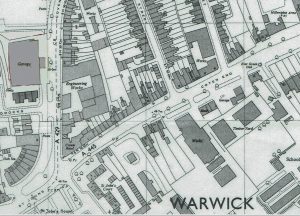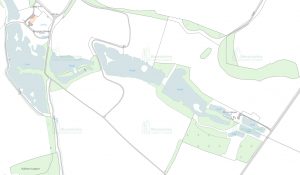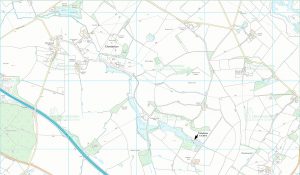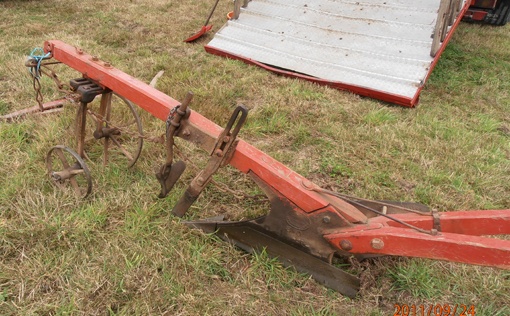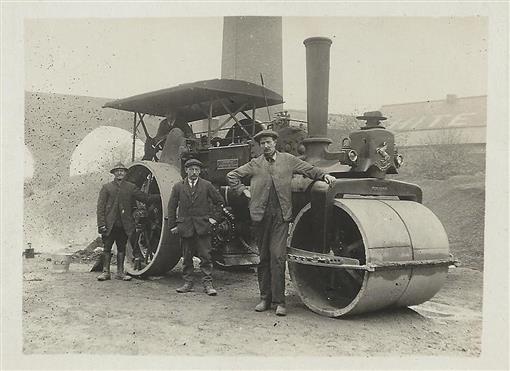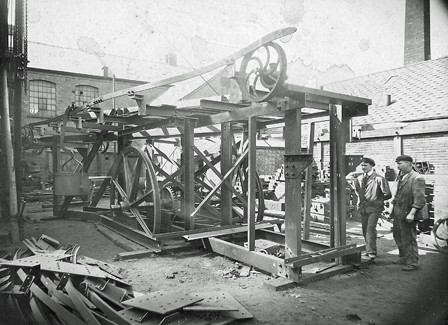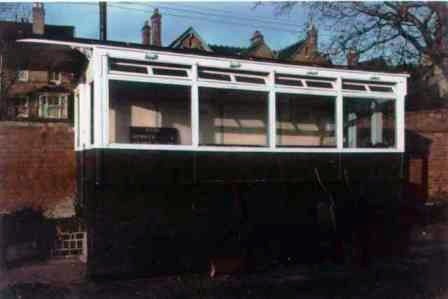Can you help?
From time to time the society receives requests for help and information.
If you can assist please reply direct to the contact address shown.
29th November 2022
Foundry Wood Coal Sidings, Leamington Spa. Hello, I’m trying to find out what was on the site of Foundry Wood, in Leamington, before the railway sidings were built there in I think about 1900. Do you know where I might find that out?
Thanks, Matthew Black
matt.black@pop3.poptel.org.uk
(Note from Webmaster; The 1887 map at this link, https://maps.nls.uk/view/101585413, shows what looks like a field with two ponds in the corner – please contact Matt if you have any more information about this location, Peter).
19th October 2021
Pressoturn Limited, Leamington Spa. Pressoturn Limited, was a company that had its design offices in Leam Terrace West (South Side ), Leamington Spa. They primarily designed bulk materials handling systems of all sorts and sizes. Among other things, I think they designed the Bodleian Library stack handling system. Whilst Pressoturn was the design authority, I believe Warwick Production manufactured some of their installations. In my youth, after school and for pocket money, I printed engineering drawings for Pressoturn at their Leam Terrace offices. I still remember a few of the draughtmen’s names. A Mr Pettison, I think, was their chief/ senior designer. I also remember there were a number of very good looking office girls too! Happy days- probably about 1958/59. If you have any information about the company please get in touch with me.
John Willock
johnwillock4522@yahoo.co.uk
24th May 2021
Cherry Orchard Brickworks, Kenilworth. I’m researching the life of my grandfather, Frederick (Fred) Charles Kent (1883 – 1951), and am interested in his links to E. H. Burgess Ltd, later E.H. Burgess & Son Ltd, of London and their founder Ernest Henry Burgess (1872 – 1945). I read with interest an article on the WIAS website about how Ernest Burgess had purchased the Cherry Orchard brickworks, Kenilworth at: https://www.warwickshireias.org/cherry-orchard-brickworks . Therein it mentions his grandson, Michael Burgess, who was general manager at the works until its closure in, I think, 1977. Ernest (and his son, David, who took over the firm on his father’s death and ran it until his own passing in 1966) was my grandfather’s employer for 41 years. Mr & Mrs Burgess senior and my grandparents were close – Mrs Burgess (Florence) was Godmother to one of Fred’s children.
Update – I am making an assumption that the E H Burgess Ltd that purchased the brick yard is the same that I am interested in. I’m pretty sure it is, because it is not a common name, they were a building firm and their head office was in London. I also know they had other connections with Warwickshire. I thought I’d just let you know I’m interested in liaising with anyone with knowledge/connections to E H Burgess Ltd/E H Burgess & Son Ltd of London, their founder Ernest Henry Burgess (1872-1945) or his son, David Clement Burgess (1900 –1966) or their descendants – with a possible connection to the Cherry Orchard brickyard, Kenilworth that closed in 1977 when the MD was Michael Burgess, believed to be the grandson of Ernest, with a view to discussing shared family history interests.
Russ Kent
r.kent1@btinternet.com
If anyone can help please contact Russ Kent direct.
14th April 2021
For the past two decades I have been searching for Churches that had installed during the Victorian period an underfloor hypocaust warm air heating system. I have found a cluster of 8 churches in south Warwickshire with these systems but now all abandoned. Two builders/bricklayers named Mitchell and Bradshaw who lived in Leamington were responsible for these underfloor hypocaust warm air heating systems. All the systems so far found were installed during the 1851 to 1886 period.
The engineering Heritage Group of which I am a member is researching these two people to discover how builders/bricklayers could acquire the design and technical knowledge to install these heating systems in parish churches of various shapes and sizes. Some hypocausts were installed when the church was originally built and others when the church had a Victorian restoration.
Has any member of your Group ever come across these two Leamington builders? They installed this hypocaust design in other county’s parish churches, Herefordshire, Oxfordshire Essex and Kent.
Any help or guidance your group could provide would be greatly appreciated.
F J Ferris, CIBSE Heritage Group
john@hevac-heritage.org
7th September 2020
This may sound like a strange question, but it is perfectly serious. I am a specialist in the study of beetles (the insect, not the car) and for years my fellow coleopterists and I have been puzzled by the occurrence in Warwickshire (and incidentally neighbouring Leicestershire), during the latter part of the 19th century, of some beetle species that are otherwise only known from banks of decaying seaweed at the coast. Specimens still exist in museums and there is no doubt that some of them, at least, are correctly identified. But what on earth are seaweed beetles doing in Warwickshire? We think that mislabelling of specimens or deliberate fraud is very unlikely, especially as three different species in two counties are involved.
My friend Steve Lane (formerly of Coventry Museum) and I have formulated a working hypothesis but it needs some in-depth local historical knowledge to substantiate it. We think that perhaps seaweed could have been loaded onto barges at the coast and transported by canal to Warwickshire, either for use as a fertiliser (“sea-manure”) or as a raw material in the production of iodine or agar, or for some other industrial use. It is telling that one of the sites where these beetles occurred, a mossy bank near the village of Knowle, is less than a mile from the Grand Union Canal.
I wonder if your membership might be asked to rack their brains and raid their collective libraries for any reference to the importation of seaweed into Warwickshire. There might be just a passing reference in a history of the canal network, history of farming or industrial history in the county. If we can find that last link in the chain of reasoning then a long-standing zoogeographical puzzle will have been solved at last!
Hoping you can help.
Best wishes,
Andrew Duff, Ph.D.
andrew.duff.norfolk@gmail.com
7th August 2020
Warwick (Emscote) Power Station. My uncle, Jack Peel, drove the steeple-cab overhead electric loco here for many years (end of WW2 through to closure?). One thing that he told me that I have not seen mentioned elsewhere is that one of the 3 sidings was unusable due to subsidence – I believe this was from 1948 onwards! He also told me that when the last loco (fairly sure this was the BTH one) was scrapped the brush gear was acquired by ‘a museum in Leicestershire’ because of its historic significance. I have been unable to pass this on to anyone, perhaps you know someone who might be interested in it.
Dave Peel
(Does anyone know where in Leicestershire the remains might be?? Please email the webmaster if you know at enquiries@warwickshireias.org).
29th July 2020
I am trying to identify the mark in the photograph attached. The mark dates from 1898 and is on the underside of the footplate of an old car owned by my grandfather. Do you think it could be related to Ansley Hall or Ansley Hall Coal and Iron Co.
Yours faithfully,
Richard Smith
flica@mac.com
13th May 2020
A request from WIAS member Peter Stanworth – I wonder if the society might be able to help with identification. I am attaching photographs of two items that appeared when the foundations for the water tower were excavated. One is a hollow copper ring with a much smaller ring riveted to the circumference near the join. It is 5″ in diameter. The other is a plastic (?Bakelite) disc with a face embossed on one side. On the underside it has a moulded centre which looks as though it took a dowel for mounting. It is 3 1/2″ diameter. I have asked many people and none has any idea about them.
If you can help please email the Webmaster – enquiry@warwickshireias.org
3rd May 2020
A walking friend of mine has posed a question I cannot answer. She would like to know something of the history of the quarrying operations that took place prior to the formation of the Ryton Pools and specifically the reason for the enormous stones that are situated on the footpath from Bubbenhall to Bubbenhall Wood. I wonder if this could please be placed on our website under “requests for information”? There is bound to be somebody who knows something!
Best Wishes and Keep Safe,
John Willock,
johnwillock4522@yahoo.co.uk
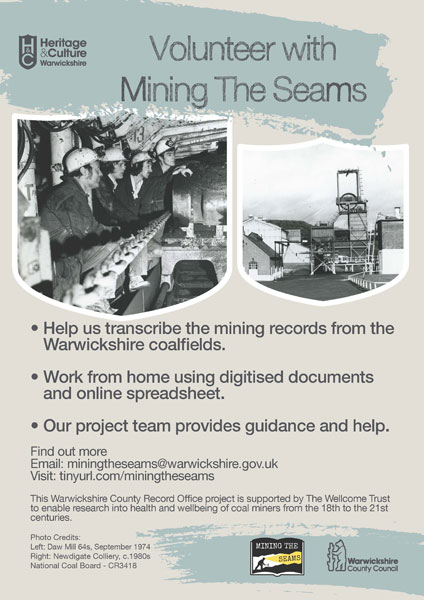 Mining the Seams at Warwickshire County Record Office – Can you help? Mining the Seams, our remote volunteering project, is still very active and we are looking for new people to join us. We’re transcribing compensation ledgers from the Midland Colliery Owners’ Mutual Indemnity Company to create a searchable database of information from compensation claims from 1899 – 1940. Everything is done remotely with documents shared via the internet. If anyone is interested in joining us, then all they would need to do is email us at miningtheseams@warwickshire.gov.uk and we’ll be able to tell them more and sign them up fully from there. Click here for a profile of this role.
Mining the Seams at Warwickshire County Record Office – Can you help? Mining the Seams, our remote volunteering project, is still very active and we are looking for new people to join us. We’re transcribing compensation ledgers from the Midland Colliery Owners’ Mutual Indemnity Company to create a searchable database of information from compensation claims from 1899 – 1940. Everything is done remotely with documents shared via the internet. If anyone is interested in joining us, then all they would need to do is email us at miningtheseams@warwickshire.gov.uk and we’ll be able to tell them more and sign them up fully from there. Click here for a profile of this role.
(You can see an example of some of the maps we are also working with on the short You Tube video Hall End Colliery map). This is also available on the WIAS ‘FILMS’ page.
Sarah Hann,
Volunteer Coordinator, Heritage & Culture Warwickshire,
Warwickshire County Council,
Resources Directorate,
St John’s House,
Warwick, CV34 4NF.
Email: sarahhann@warwickshire.gov.uk Tel: 01926 736422 30th April 2020
19th April 2020
I have been looking for any information on the Shipston-on-Stour Power Station. This seems to have opened in, or about, 1912 and to have lasted into the 1930’s.
John Brace, jj.brace40@gmail.com
10th April 2020
The question arises from time to time among members of the Milestone Society as to what to do with the archive material some people accumulate. For example, a member has just revealed that he has a collection of photos (mostly with negatives) of 1930s fingerposts going back 40 years. He now wants to find a home for them. Are you aware of any Industrial Archaeology repository that would be interested in housing such material? I am also aware that the author of the Shire book on milestones has a photographic archive going back decades, recording many milemarkers now lost to road improvements and theft.
Best wishes
Robert Caldicott
Milestone Society
robcaldicott@fastmail.fm
https://warwickshirewayside.co.uk
18th January 2020
I am trying to further some research on a building ( 1970) that was where Woodville Court, Coventry Rd, Warwick is today. Going back from 1970 it was various, VW – FIAT and petrol station garage. During 1970-1974 it was leased by The Donald Healey Motor Co whose book I am writing is all about. I wondered if anyone has a photo of when it was a Shell Petrol station in 1970 – 74?
Thank you
David Matthews
01892784629
davidmatthews641@btinternet.com
8th January 2020
I am researching garages in Warwick in the 1960’s and 1970’s and wondered if you had any records regarding the following companies? Warwick AutoCar Ltd, Coventry Rd, 1960s to early 1970. Jensen-Healey House, Shell garage run by the Donald Healey Co. about 1970- 1973. The Shell Garage had a windscreen sticker, copy drawing attached, trying to find a photo of the garage or details etc. It is believed this was one and the same location later demolished for housing in the 90’s.
Thank you
David Matthews
01892784629
davidmatthews641@btinternet.com
18th July 2019
Not sure this is the type of Industrial Archaeology you do, but I am researching history on Jaguar Tools and one of the items that has come up is a Pink Lockheed Bleeder tin. Jaguar include various Bleeder Tins in their tool kits, but I have not been able to narrow down who used this Pink tin. I have contacted a number of British auto clubs to see if any of them know of any of their tool kits that might have used such a tin, but no luck yet. Here is a sample page from my book. Any information would be appreciated.
Steve Kennedy, Denver, Colorado, skennedy@ecentral.com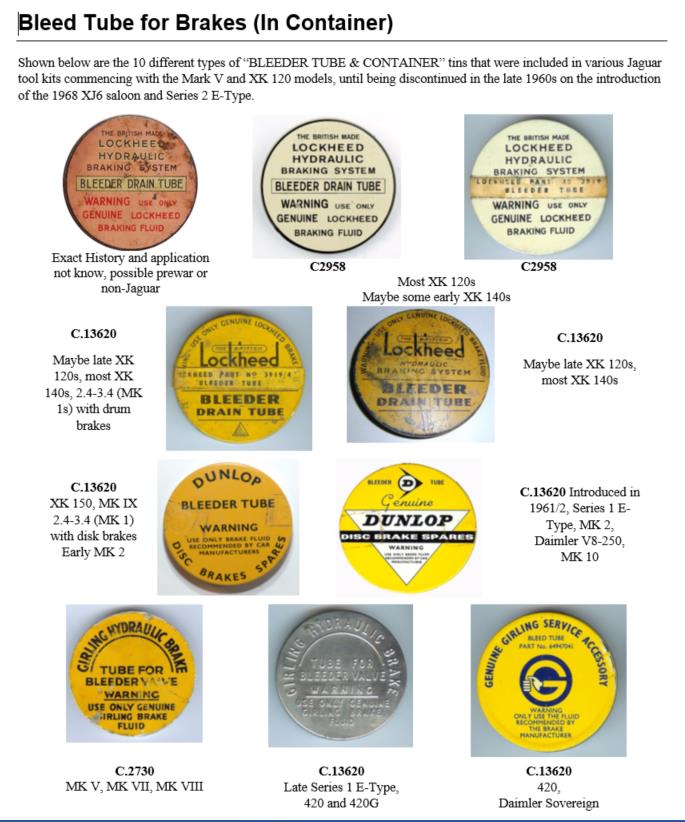
8th December 2017
Hello, I wonder if you can help. I’m looking into the history of the gas network in Stratford-upon-Avon. I noticed there are some references to it in a WIAS publication- WIAS leaflet 4 ‘History underfoot in Stratford-upon-Avon by J Brace, published in 1998. Is this leaflet still available and would it be possible to buy a copy? Also, would you happen to know of any other sources of information on this subject?
Kind regards,
Sara Wilcox
Sara.wilcox@cadentgas.com
7th November 2017
Dear all, many of you will know Anthony Coulls, son of Peter, and great enthusiast for the industrial heritage, particularly where steam is involved! He is running a project to try and raise funds to restore an 1894 Aveling and Porter steam roller. I feel sure he would be glad of any support you would feel able to give.
He writes …
The Aveling & Porter steam roller 3315 was built in 1894 and weighs 15 tons. It worked until the late 1950s and then stood idle until 2003 when it started a new life with the founders of the Hephaestus Trust. Over the next nine years it was slowly returned to working order and made a debut in steam in 2012. Initial trials showed up a number of problems that the restoration team had not forseen and since 2013, it has lain dismantled awaiting a new axle and gears. These are major repairs which the Trust cannot afford, and run to £5000 including the cost of recertifying the boiler for use. The rest of the roller is in excellent condition after the initial restoration. Once complete, the roller will be shown at events, schools and gatherings in County Durham and Northumberland, where it once worked. It will be reunited with the roller driver’s living van and a classic water cart to make a full road train able to tell the story of roadmending across the UK. It is the hope that funds can be raised to allow the repairs to be undertaken in 2018 to enable the roller to attend a number of events in 2019 to mark its 125th anniversary. Should the appeal not reach the full target, it will still allow a lot of work to be undertaken towards the repairs. We appeal to friends and enthusiasts to help make that happen and a number of incentives are offered to supporters. EVERY DONOR WILL RECEIVE AN INVITE TO THE 125TH BIRTHDAY PARTY!
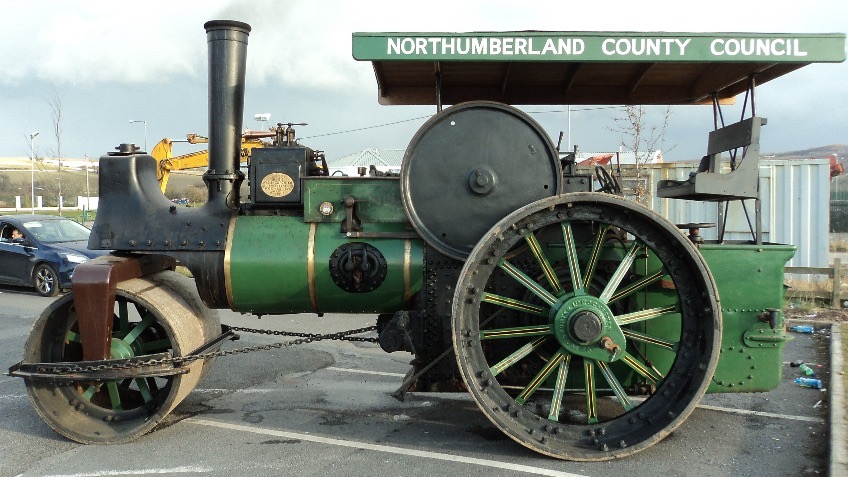
Details are here: On a Roll or members can email Anthony on ajcoulls@yahoo.co.uk or ring him on 07833194286 if they would rather not give via the internet. There are a number of incentives offered if folks give via the internet appeal page.
Many thanks, Martin Green, Chairman, WIAS
UPDATE – TARGET REACHED AND RESTORATION IS NOW UNDER WAY. MANY THANKS TO ANYONE WHO CONTRIBUTED TO THIS PROJECT! DECEMBER 2017
8th September 2017
I was given two small keys (By Mr. Pike head of the water supply for L. Spa) which were part of many that held the main fly wheel to the crank on this pump when it was dismantled about mid to late 50’s. I would like to pass them on as they may be of interest to someone. If you know anyone would you please let get in touch. Do you know of any pictures of this pump as I would love to see them. I am one of Mr. H. C. Kemp’s sons, you may remember the Ironmongers in Bedford Street. I look forward to your reply.
Simon
john.kemp4@btinternet.com
Reponse 9th September 2017
Dear Mr Kemp, the two steam pumping engines situated at the Campion Terrace waterworks were made by Young and Co, Eccleston Foundry, London and were installed about 1879. They were named after two Leamington Mayors/ Aldermen of the period, viz, The Wackerill and The Harding. There were two sets of pumps each located upon a circular cast iron curb and steel girders capping the wells. The pumps were driven by the engines via spur gearing, either engine being able to drive either pump set (which were of different bore and stroke). The Flywheels were 12′ 6″diameter and cast in two pieces with only two bolts at the hub and internal spigots and cotters at the rim. George Watkins in his book (Steam Engines In Industry Vol 1) records that the gearing ran quietly when he possibly photographed them in 1956. This is slightly surprising if all the gears were cast, although I suppose by then they been running for seventy – odd years and had fully bedded themselves in! Perhaps the gears were actually machine cut, although I am not sure in the late 1870s if true involute form gears could be cut by machine. Very possibly, but I will have to check this point. The engines were supplied with steam at 60 psi and the pumps delivered 1.4 mgd. Two photographs appear in Watkin’s book, mentioned above. I could possibly get them scanned if you wish. Years ago I remember descending the borehole at Campion Terrace- quite an experience.
Hope this may be of interest.
Regards,
John Willock.
29th August 2017
Hi, I’m Faye Irvine, Wildlife Engagement Officer at Warwickshire Wildlife Trust. As you may be aware, the Trust purchased Bubbenhall Wood and what was part of Wood Farm, just outside the village of Bubbenhall. As part of a larger project to engage local people and open up the site to our members we are conducting an Oral History project to capture people’s memories and photos of the site and how it has changed in living memory. I wondered if anyone in your organisation may have knowledge of the wood, lived near the wood as a child, or have recent memories of the wood as it went through it’s quarrying phase. Likewise, do let me know if you have further questions. Click here to view the Information Sheet.
Kindest Regards,
Faye Irvine
faye.irvine@wkwt.org.uk
25th June 2017
I am researching the history of the Willoughby de Broke Estate, Chesterton, South Warwickshire. I am interested in a Private Estate Water Scheme for 10 farms and 18 cottages on the Estate which was given grant approval by the Ministry of Agriculture in 1948 and completed in 1951. All that now remains of the scheme is a pump house at map reference SP 368 571, some old filter beds and a series of ponds stretching down the valley in a north westerly direction towards Chesterton village. (please see enclosed maps for location). I have contacted Severn Trent Water but they tell me they have no record of the scheme because it pre-dates the formation of the company in 1985. I have visited the National Archives and obtained minutes from the meetings of the Warwickshire War Ag. Drainage and Water Supplies Sub-Committee which approved the 50% grant on behalf of the Ministry of Agriculture in 1948. Southam RDC had been shown details of the scheme in 1947 (see enclosed newspaper cutting). I have dates,costs but no details of the scheme itself. Could any of your members suggest whether there is likely to be a plan of the scheme still surviving or where I could make further enquiries. If Warwickshire County Council holds such records, can anyone suggest which department I should contact. The contractor was G. Lines & Sons Ltd, Water Supply Engineers, Solihull.
Many thanks for your assistance,
Peter Johnson
peter.johnson.56@googlemail.com
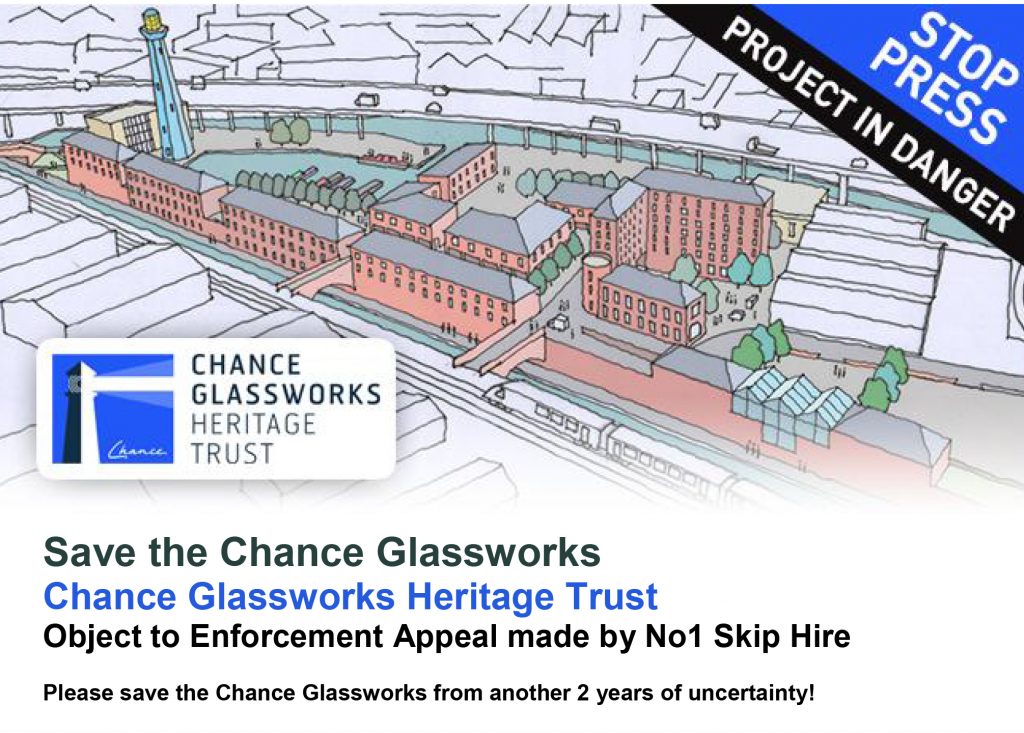
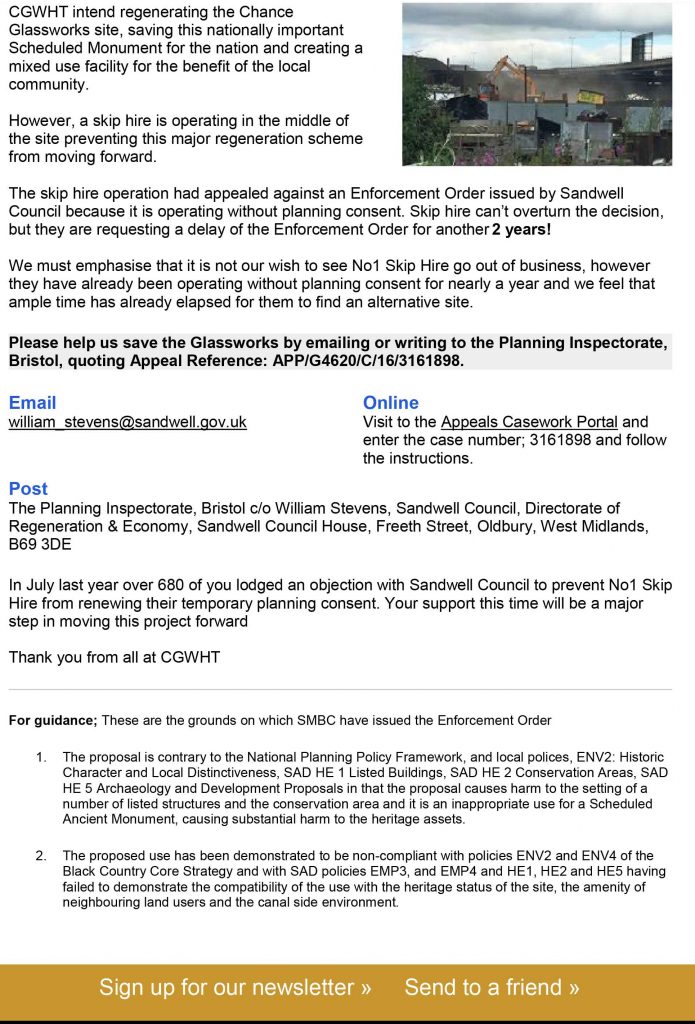
16th October 2016
I am starting to research the Alveston Manor Hotel in Stratford for a self published book- I write on various hotels and houses and my website may be of interest: www.johnrichard.fast-page.org I am hoping you may be able to help me with my research. I am looking for documents, plans, maps, photographs etc of the Hotel and its grounds which may be of interest to the book. I look forward to hearing from you at your convenience.
Yours sincerely
John Richard Hodges
richardjhodges79@gmail.com
6th October 2016
I am trying to find where the surviving metal distance marker in Shipston on Stour, Church Street (A3400) was made. I have been told there existed around that time an ironworks/forge in the vicinity of Stratford- this from an employee of a current forge in Banbury whose father worked in such a place in Stratford which allegedly included lampposts in its wares. Any help welcome.
Mervyn Benford
mervynbenford@gmail.com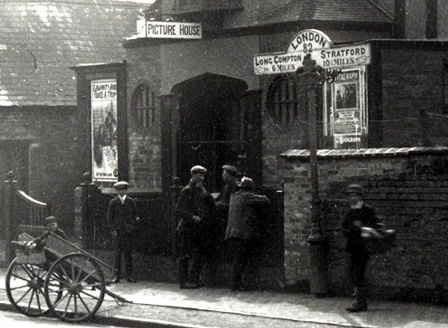
9th September 2016
Dear Sir or Madam, I would be most grateful if you could tell me anything about the company Greves & Co Ltd. Coten End Works, Cherry Street, Warwick. It was in existence in 1955. Many thanks.
Mike Barnes
mikebarnestracker@gmail.com
10th June 2016
I am hoping to create a scale model of the aerial ropeway as an attachment to an N gauge model of the railway sidings at Burton Dassett Platform, and have discovered that there is a reference to this in one of your newsletters (NL No 49, P3). I have two requests:
1 – Would it be possible to get hold of a copy of this article?
2 – Is there anyone in your society who has a particular interest in the ropeway and who would be happy for me to contact them in order to discuss this project in greater detail. I look forward to hearing from you in due course.
Best wishes
Mark Reader (Leamington and Warwick Model Railway Society)
mark.reader@team-r.co.uk
Mark – the article is available and will be emailed to you – Webmaster
11th November 2015
One of the surviving mileposts, at Shipston on Stour, is illustrated in your database, and referred to as one of the six which the Milestone Society is hoping to restore. Despite much research we have not been able to trace who made them, or exactly when they were installed. The turnpike dates from 1730, and they are later than that. Can any of your members shed any light on the mystery? I have attached a photo from 1908 showing the Shipston milepost in a postcard of the Shipston Picture House, long since demolished.
Robert Caldicott
robcaldicott@fastmail.fm
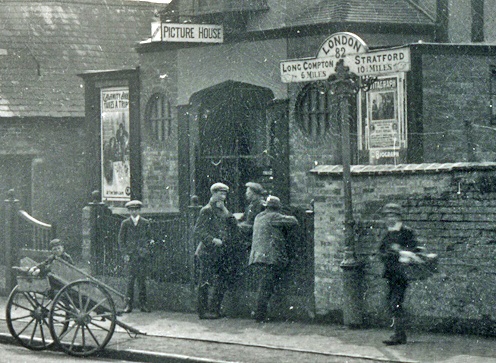
Shipston on Stour Mile Post
8th June 2015
Bit of a cheek, but we’ve recently moved into a new property and have been trying to find out about its history (to no avail – other than the date on the wall – 1924); the address is – The Old Pump House, B79 0JS. We’re not expecting everything on a plate and we’re willing to put in the work, but as this is all new to us, some guidance on how to go about finding its history would be wonderful. As a minimum, everything we find out, we’d be more than willing to share. If you can assist and wish to discuss, please give me a call, or drop me an email. The best we’ve found so far is ‘South Staffordshire Waterworks Company’ from this web link http://southstaffswaterarchives.org.uk/SSHISTRY2.pdf , however this doesn’t cover “Atherstone District Waterworks – 1923” area and therefore the Old Pump House is not mentioned. It’d be nice if it had some wonderful ‘steam’ history, but having any information to pin to it would be great.
Thanks in advance.
Ian Callender
ian@callender.cc
12th November 2014
Dear Sir, My grandfather John Roper worked at Ford’s Foundry in Leamington Spa during WW2. He wasn’t called up due to a hearing problem. I was hoping you could give me insight into a) what it was like to work there during WW2 and b) what they were likely to be making, i.e. were they helping the war effort?
Regards
Claire Cobb
clairecobb@btinternet.com
6th March 2014
Hello, I am writing to you regarding a newsletter (number 33) which you released in January, 2009. I was very interested by the information about Bluemel Brothers, as I am doing some research on it and was wondering if you had any more information on the company? If you do, please let me know at: francescacollier@ymail.com
Thank you,
Francesca Collier.
johnmorris5@hotmail.com
19th March 2013
Cliff Jones
info@bobsaundersphotography.co.uk
Peter Robson
petrov37@btinternet.com
John Sullivan
jsullivan@trustpro.co.uk
David@dhardwick.co.uk
miskin565@btinternet.com
tdbakic@yahoo.com
steve.grudgings@btinternet.com
w.gorman@mypostoffice.co.uk
www.chedhamsyard.org.uk
Please contact Arthur direct if you would like this IA magazine collection.
andy@spiceley.net
Member of Warwickshire IA.
tonyk37@btinternet.com
chriscapewell@googlemail.com
djconst2003@hotmail.co.uk
I have a working radio with the original Transformer/Speaker box out of a Lancaster bomber. On the front there is a number of dates. What I would like to know, if you can help, is can you tell me where I can get any history about the radio.
gv.robinson@virgin.net
chriscapewell@googlemail.com
barry.cooper70@tesco.net
mcinnes9@btinternet.com
stella.barr@ntlworld.com

